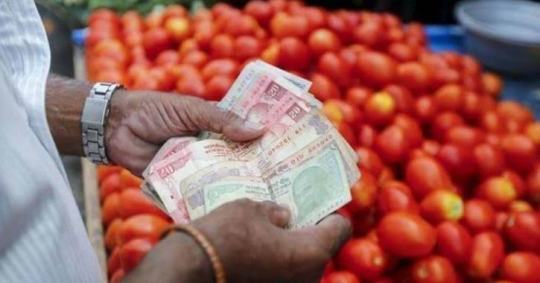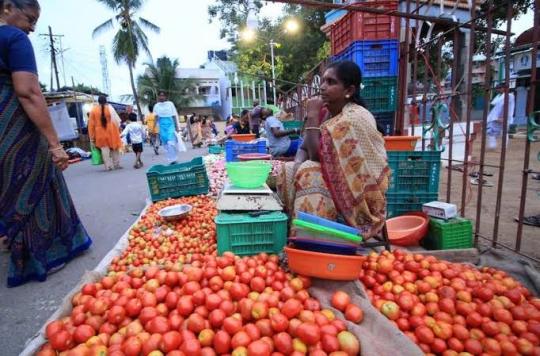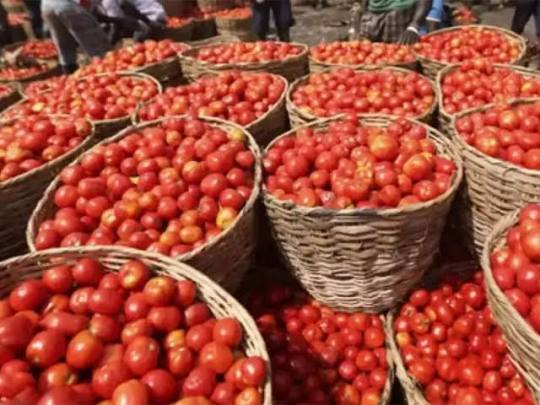Don't wanna be here? Send us removal request.
Text
Like share and subscribe
#youtube#youtuberewind#dog#vlog#youtumblr#labrador#good morning#shortvideo#shorts#trending#instagram#reels#subscribe#share
4 notes
·
View notes
Text
https://youtube.com/shorts/zHmd0zCSrzk?feature=share

1 note
·
View note
Text
The Soaring Tomato Prices in India: Factors, Consequences, and Potential Solutions

Introduction: In recent times, the skyrocketing prices of tomatoes in India have become a cause for concern among consumers, traders, and policymakers. This blog post aims to delve into the reasons behind the surge in tomato prices, analyze its impact on various stakeholders, and explore potential solutions to address this issue.
Factors Influencing Rising Tomato Prices:
Seasonal Variations and Weather Conditions: Fluctuations in tomato production due to seasonal changes, adverse weather conditions, and natural disasters can disrupt the supply, leading to price spikes.
Transportation and Storage Challenges: Inadequate infrastructure, inefficient logistics, and lack of proper storage facilities contribute to post-harvest losses, which further impact the supply and prices.
Demand-Supply Imbalance: A surge in demand, especially during festive seasons and periods of high consumption, coupled with insufficient supply, can drive up tomato prices.
Impact of Rising Tomato Prices:
Household Budgets and Inflation: Rising tomato prices can have a direct impact on consumers' monthly expenses and overall inflation rates, as tomatoes are a staple ingredient in Indian cuisine.
Farmer Income and Livelihoods: Higher prices may benefit tomato farmers in the short term, but long-term price volatility can impact their income stability and farming practices.
Food Processing and Restaurant Industry: Rising tomato prices can affect food processors, restaurants, and street food vendors, potentially leading to increased menu prices and reduced profit margins.
Potential Solutions and Mitigation Strategies:
Improved Agricultural Practices: Encouraging farmers to adopt modern agricultural techniques, use high-yielding tomato varieties, and implement proper crop management practices can enhance productivity and minimize losses.
Strengthening Supply Chain Infrastructure: Investments in transportation, cold storage facilities, and better market linkages can reduce post-harvest losses, improve supply efficiency, and stabilize tomato prices.
Diversification and Crop Planning: Promoting crop diversification by supporting farmers to cultivate alternative vegetables and implementing effective crop planning strategies can help manage supply-demand dynamics.

Government Interventions: The government can intervene by implementing price control measures, providing subsidies, and supporting farmer cooperatives to stabilize tomato prices and safeguard consumer interests.

Conclusion: The rising prices of tomatoes in India pose significant challenges for consumers, farmers, and the food industry. Understanding the underlying causes, assessing the impact, and exploring effective solutions are crucial for addressing this issue. Collaborative efforts between farmers, policymakers, and stakeholders across the supply chain are necessary to ensure a more sustainable and affordable tomato market in India.
Disclaimer: The information provided in this blog post is based on available knowledge up to September 2021. The tomato market is subject to dynamic changes, and the situation may have evolved since then.
#TomatoPrices#IndianAgriculture#FoodInflation#SupplyChain#CropProduction#WeatherImpact#PostHarvestLoss#DemandSupply#ConsumerImpact#FarmersLivelihood#FoodProcessingIndustry#InfrastructureDevelopment#CropDiversification#GovernmentInterventions#PriceStabilization#SustainableAgriculture#MarketLinkages#RuralDevelopment#AffordableFood#PolicyReforms
1 note
·
View note
Text
The Rising Oil Prices in Russia: Causes, Impact, and Future Trends

Russia, being one of the world's largest oil producers, plays a crucial role in the global energy market. In recent times, the nation has been grappling with the challenges posed by rising oil prices. This blog post aims to shed light on the causes behind the surge in oil prices in Russia, examine its impact on various stakeholders, and explore potential future trends.
Understanding the Causes of Rising Oil Prices in Russia:
Supply and Demand Dynamics: Factors like geopolitical tensions, production cuts, and disruptions in oil-producing regions can affect global oil supply, leading to price increases.
Economic Recovery and Global Demand: As economies recover from the impacts of the COVID-19 pandemic, the demand for oil has surged, putting upward pressure on prices.
Domestic Policies and Production Costs: Russia's domestic policies, tax regulations, and production costs can influence oil prices within the country.

Impact of Rising Oil Prices on Russia:
Economic Growth and Government Revenue: High oil prices can positively impact Russia's economy, as the country heavily relies on oil exports for revenue. Increased oil prices can boost government income and support economic growth.
Inflation and Consumer Spending: Rising oil prices can contribute to inflation, which may impact consumer spending power and the cost of living for ordinary citizens.
Energy Security and International Relations: Russia's position as a major oil exporter gives it geopolitical leverage and influences its international relationships.

Future Trends and Outlook:
Diversification of Energy Sources: As concerns regarding climate change grow and renewable energy gains prominence, Russia may face the need to diversify its energy portfolio beyond oil.
Technological Advancements and Efficiency: Continued technological advancements and improved efficiency in oil production and extraction may mitigate the impact of rising prices.
Geopolitical Developments: Changing global dynamics, geopolitical conflicts, and international agreements can significantly influence oil prices and Russia's position in the energy market.
Conclusion: The rising oil prices in Russia pose both opportunities and challenges for the nation. While it brings economic benefits, it also warrants a careful assessment of long-term sustainability and the need to adapt to changing energy dynamics. Understanding the causes, impact, and future trends surrounding rising oil prices in Russia is crucial for stakeholders, policymakers, and individuals interested in the global energy market.
Disclaimer: The information provided in this blog post is based on available knowledge up to September 2021. The oil market is highly dynamic, and the situation may have evolved since then.
#OilPrices#RussiaEconomy#GlobalEnergyMarket#OilProduction#SupplyandDemand#Geopolitics#EnergySecurity#EconomicImpact#FutureTrends#OilExports#EnergyDiversification#GeopoliticalConflicts#ClimateChange#RenewableEnergy#GovernmentRevenue#Inflation#ConsumerSpending#InternationalRelations#TechnologicalAdvancements#Sustainability
2 notes
·
View notes